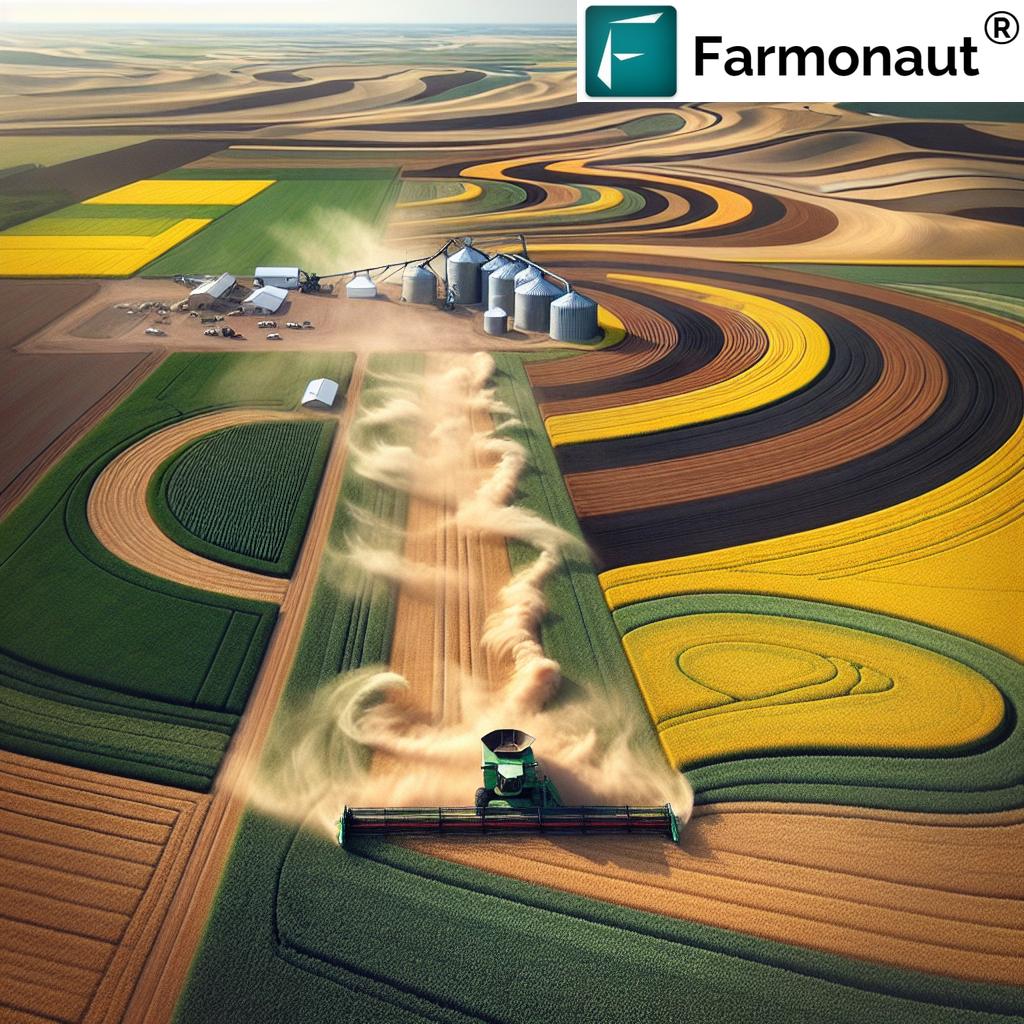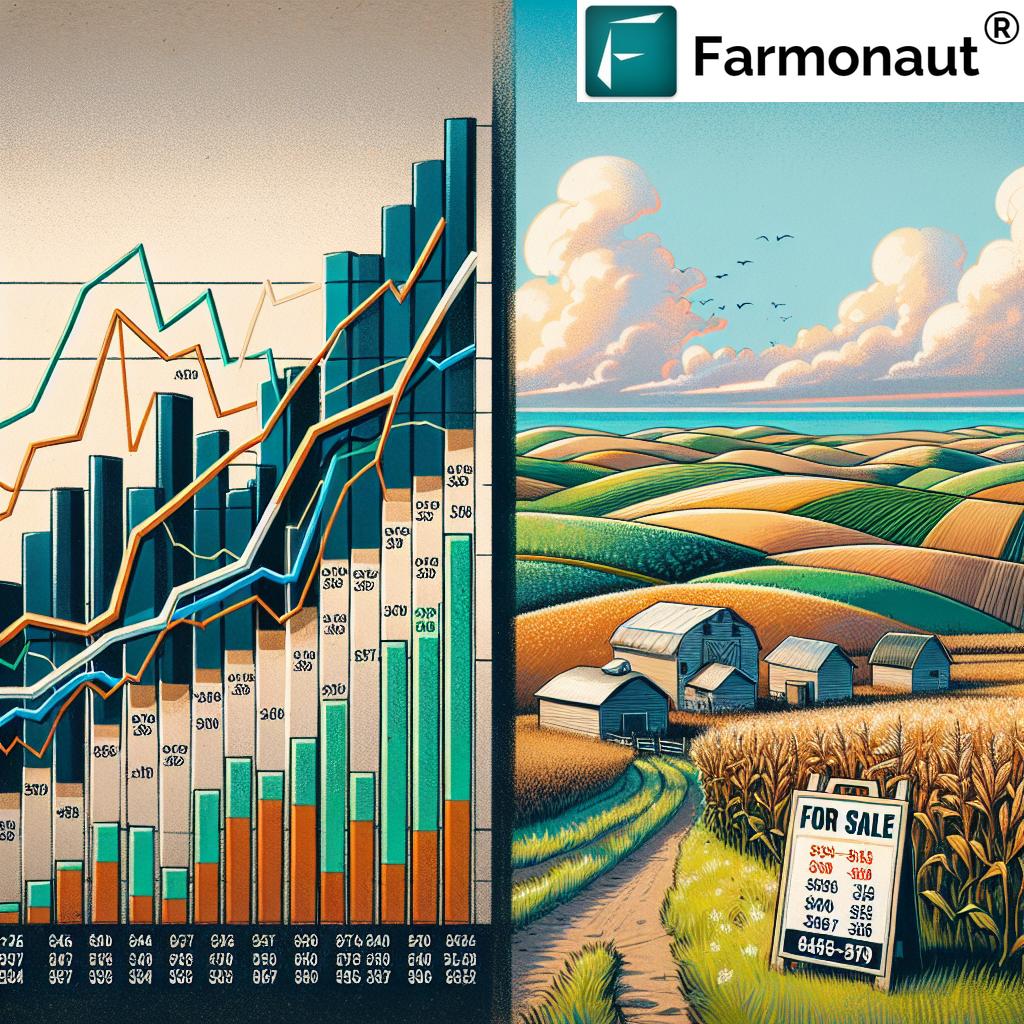Alberta’s Farmland Market Trends: Analyzing Price Growth and Provincial Comparisons in 2023
“Alberta farmland prices increased in 2023, but at a slower rate than the national average, reflecting regional market dynamics.”
Welcome to our comprehensive analysis of Alberta’s farmland market trends in 2023. As we delve into the intricacies of the Canadian agricultural landscape, we’ll explore how Alberta’s farmland prices are evolving in comparison to other provinces and the national average. Our goal is to provide you with valuable insights into the factors shaping the agricultural real estate market across Western Canada and beyond.
The Current State of Alberta’s Farmland Market
Alberta, known for its vast prairies and rich agricultural heritage, has been experiencing a steady increase in farmland prices. However, the growth rate has been more moderate compared to the national average. This unique position warrants a closer look at the factors influencing the province’s agricultural real estate market.

Provincial Farmland Price Comparison
To better understand Alberta’s position in the Canadian farmland market, let’s examine how it compares to other key agricultural provinces:
| Province | Average Farmland Price ($/acre) – 2023 estimate | Year-over-Year Price Change (%) | 5-Year Price Growth (%) | Key Factors Influencing Price |
|---|---|---|---|---|
| Alberta | 3,800 | 3.5% | 17% | Moderate demand, stable crop prices |
| Saskatchewan | 2,900 | 5.2% | 25% | Strong grain markets, limited supply |
| Manitoba | 3,200 | 4.8% | 22% | Diversified agriculture, steady demand |
| Ontario | 15,000 | 7.5% | 35% | Urban expansion, high-value crops |
| National Average | 4,500 | 5.5% | 28% | Overall strong demand, low interest rates |
As we can see from the table, Alberta’s farmland price growth has been more modest compared to other provinces and the national average. This trend reflects the unique dynamics of Alberta’s agricultural sector and broader economic factors.
Factors Influencing Alberta’s Farmland Prices
- Interest Rates: The recent increase in interest rates has had a cooling effect on farmland demand across Canada, including Alberta.
- Limited Land Supply: While Alberta has vast agricultural areas, prime farmland remains limited, supporting price stability.
- Crop Market Outlook: The performance of key crops like canola and grains significantly impacts farmland values.
- Weather Conditions: Alberta’s variable climate can affect crop yields and, consequently, land prices.
- Global Agricultural Trends: International demand for Canadian agricultural products influences local farmland markets.
To gain deeper insights into crop health and productivity, many Alberta farmers are turning to advanced technologies. Farmonaut’s satellite-based crop monitoring system offers real-time data on vegetation health, helping farmers make informed decisions about their land management practices.
The Impact of Lower-Priced Regions on Overall Growth
“Lower-priced farmland regions in Canada experienced significant value growth, outpacing more expensive agricultural areas.”
An interesting trend we’ve observed is that lower-priced farmland regions across Canada, including parts of Alberta, have seen substantial value growth. This phenomenon is driven by several factors:
- Investors seeking more affordable entry points into the agricultural real estate market
- Farmers expanding operations into less expensive areas
- Technological advancements making previously marginal lands more productive
This trend highlights the importance of considering regional variations when analyzing farmland markets. For farmers and investors looking to leverage this trend, tools like Farmonaut’s API can provide valuable data on land productivity and potential across different regions.
Farm Income Projections and Their Impact on Land Values
Farm income is a crucial factor in determining farmland prices. In Alberta, farm income projections for 2023 and beyond are cautiously optimistic, supported by:
- Stable commodity prices for key crops like wheat and canola
- Growing demand for plant-based proteins, benefiting pulse crop producers
- Expanding markets for Alberta’s beef and pork industries
However, challenges such as rising input costs and potential trade disruptions could impact farm incomes. Farmers can mitigate some of these risks by employing precision agriculture techniques. Farmonaut’s developer documentation provides insights into how satellite data can be integrated into farm management systems for better decision-making.

The Role of Technology in Farmland Valuation
As the agricultural sector becomes increasingly tech-driven, the valuation of farmland is also evolving. Advanced technologies are playing a crucial role in assessing land productivity and potential:
- Satellite Imagery: Provides detailed insights into crop health and land use patterns
- Soil Sensors: Offer real-time data on soil moisture and nutrient levels
- Drone Surveys: Enable high-resolution mapping of farmland
- AI and Machine Learning: Analyze vast amounts of data to predict crop yields and land values
Farmonaut’s innovative solutions are at the forefront of this technological revolution in agriculture. Our satellite-based farm management tools provide valuable data that can influence farmland valuation and investment decisions.
Alberta’s Agricultural Sector: Diversity and Resilience
Alberta’s agricultural sector is known for its diversity, which contributes to the stability of farmland prices. Key components include:
- Crop Production: Wheat, canola, barley, and pulses
- Livestock: Beef cattle, pork, and poultry
- Specialty Crops: Potatoes, sugar beets, and greenhouse vegetables
This diversity helps buffer against market fluctuations and environmental challenges. Farmers can leverage tools like Farmonaut’s Android app to monitor multiple crop types and make data-driven decisions about their operations.
The Impact of Global Agricultural Markets on Alberta Farmland
Alberta’s farmland market is increasingly influenced by global agricultural trends. Key factors include:
- International demand for Canadian grains and oilseeds
- Global commodity price fluctuations
- Trade agreements and potential disruptions
- Changing consumer preferences worldwide
Understanding these global dynamics is crucial for farmers and investors in Alberta’s agricultural sector. Farmonaut’s technologies can help stakeholders stay informed about market trends and their potential impact on land values.
Farm Financing Options in Alberta
Access to financing plays a crucial role in farmland transactions and overall market dynamics. In Alberta, farmers have several financing options:
- Traditional bank loans
- Government-backed agricultural loans
- Credit unions specializing in farm financing
- Private lenders and investor partnerships
The choice of financing can significantly impact a farmer’s ability to purchase or expand their agricultural land holdings. It’s essential to consider factors such as interest rates, repayment terms, and collateral requirements when exploring financing options.
For those interested in leveraging technology to improve their farm’s financial performance, Farmonaut’s iOS app offers tools to track crop health and productivity, which can be valuable when applying for financing or demonstrating farm value to potential lenders.
Future Outlook for Alberta’s Farmland Market
As we look towards the future of Alberta’s farmland market, several key trends are likely to shape the landscape:
- Technological Integration: Increased adoption of precision agriculture and smart farming techniques
- Climate Adaptation: Investment in drought-resistant crops and water management systems
- Sustainable Practices: Growing emphasis on environmentally friendly farming methods
- Generational Transfer: Succession planning and new entrants in the farming sector
- Value-Added Agriculture: Expansion of on-farm processing and direct-to-consumer sales
These trends suggest a dynamic future for Alberta’s agricultural sector, with potential implications for farmland values and investment opportunities.
Conclusion: Navigating Alberta’s Farmland Market
Alberta’s farmland market in 2023 presents a complex picture of moderate growth, regional variations, and evolving trends. While prices are rising at a slower pace compared to the national average, the province’s agricultural sector remains robust and diverse.
For farmers, investors, and agricultural enthusiasts, staying informed about market trends, leveraging technology, and understanding the unique factors influencing Alberta’s farmland values are key to making sound decisions in this dynamic market.
As we continue to monitor these trends, tools like Farmonaut’s satellite-based farm management solutions will play an increasingly important role in shaping the future of agriculture in Alberta and beyond.
Frequently Asked Questions (FAQ)
- Q: Why are Alberta’s farmland prices rising more slowly than the national average?
A: Alberta’s moderate price growth is due to factors such as stable crop prices, interest rate increases, and regional economic conditions. - Q: How do weather conditions impact farmland values in Alberta?
A: Weather plays a significant role in crop yields and productivity, which directly influence land values. Extreme weather events can affect short-term prices, while long-term climate trends may impact overall farmland desirability. - Q: What role does technology play in modern farming in Alberta?
A: Technology, including satellite imagery, AI-driven analytics, and precision agriculture tools, is increasingly important for optimizing crop yields, managing resources efficiently, and making informed land management decisions. - Q: How do global agricultural markets affect Alberta’s farmland prices?
A: International demand for Canadian crops, global commodity prices, and trade agreements all influence local farmland values by impacting farm incomes and investment attractiveness. - Q: What financing options are available for purchasing farmland in Alberta?
A: Options include traditional bank loans, government-backed agricultural loans, credit unions, and private lenders. The choice depends on factors like interest rates, terms, and the farmer’s financial situation.
Explore Farmonaut’s Solutions
To leverage the power of satellite technology in your farming operations, explore Farmonaut’s range of solutions:
Farmonaut Subscriptions
By staying informed about market trends and leveraging advanced technologies, stakeholders in Alberta’s agricultural sector can navigate the complexities of the farmland market with greater confidence and success.




















